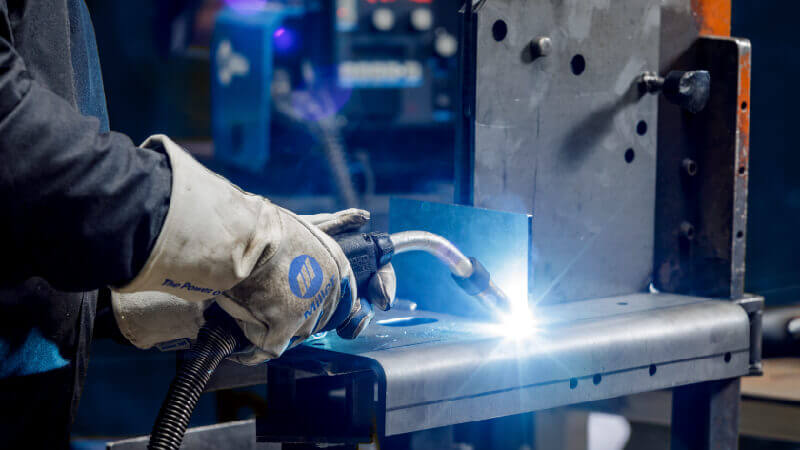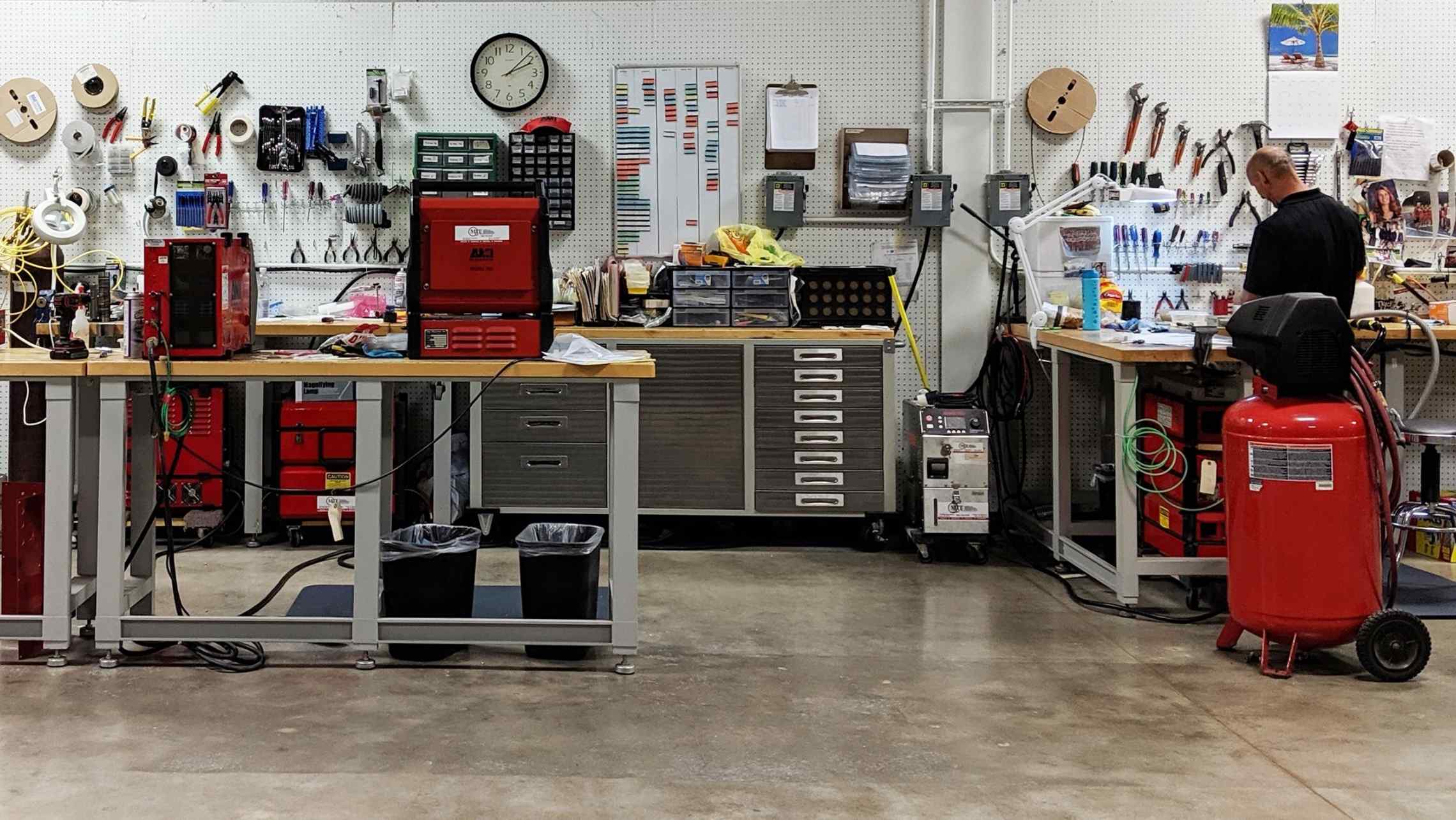Everything about Welding: Trick Insights Into Techniques and Best Practices for Success
Welding encompasses a variety of strategies, each fit for specific products and applications. Recognizing these methods, such as GMAW, SMAW, and TIG, is important for attaining optimal outcomes. In addition, the best tools and safety techniques can not be forgotten. As preparation and repairing play critical functions in the welding procedure, grasping these components can greatly enhance the high quality of the final item. What are the crucial aspects that guarantee an effective weld?
Understanding Different Welding Techniques
Welding methods incorporate a selection of methods, each fit to certain applications and materials. Amongst the most typical techniques are Gas Steel Arc Welding (GMAW), Shielded Steel Arc Welding (SMAW), and Tungsten Inert Gas Welding (TIG) GMAW, additionally referred to as MIG welding, is prominent for its speed and flexibility, making it ideal for slim products. SMAW, or stick welding, is preferred for its simplicity and effectiveness in exterior environments, particularly with thicker metals. TIG welding provides precision and control, making it appropriate for complex work and non-ferrous metals (Fabrication). Each method has its unique advantages and factors to consider, enabling welders to select the very best technique based on the job's requirements, product kind, and desired end results. Recognizing these strategies is necessary for effective welding
Vital Welding Tools and Tools
While various welding techniques require details abilities, the right equipment and tools are similarly crucial for achieving high quality results. Crucial welding equipment includes welding devices, which vary depending on the technique-- such as MIG, TIG, or stick welding. Safety equipment, including headgears, handwear covers, and aprons, warranties safety and security and convenience throughout the process. Additionally, clamps and components aid safeguard products in area, guaranteeing accuracy in welds. Consumables like welding rods, wire, and securing gas are also crucial components that influence the top quality of the weld. Furthermore, tools such as cutters and mills help with surface preparation and post-weld completing, adding to a professional end result. Investing in high-quality tools eventually enhances the efficiency and performance of welding tasks.
Safety And Security Practices in Welding
Proper safety and security methods are necessary in the welding sector to shield employees from possible hazards. Welders should put on suitable individual safety equipment (PPE), consisting of headgears with appropriate shading, handwear covers, and flame-resistant clothes. Ample air flow is vital to lower exposure to dangerous fumes and gases created throughout the welding procedure. Additionally, employees ought to be learnt the proper handling of welding devices to stop crashes. Fire precaution, such as keeping combustible products away from the welding location and having fire extinguishers easily available, are needed. Routine examinations of devices and workspaces can assist recognize possible dangers prior to they lead to accidents. By sticking to these security practices, welders can develop a much safer working setting and lessen risks related to their profession.
Preparing Materials for Welding
Preparing products for welding is an important step that substantially affects the high quality and integrity of the end product (Montana Mobile Welding and Repair Welding). Correct prep work includes cleansing the surfaces to get rid of pollutants such as rust, oil, and dust, which can jeopardize the weld. Strategies such as grinding, sanding, or using solvents are commonly employed to accomplish a clean surface area. In addition, making certain that the materials mesh well is crucial; spaces can result in weak welds. It's likewise crucial to take into account the placement and positioning of the elements, as this will certainly affect the ease of welding and the final outcome. Finally, choosing the proper filler product and ensuring compatibility with the base steels is vital for accomplishing solid, durable welds
Tips for Achieving High-Quality Welds
Attaining top notch welds needs interest to information and adherence websites to finest techniques throughout the welding process. Appropriate joint prep work is crucial, ensuring surfaces are clean and free from contaminants. Selecting the suitable filler material and welding technique based upon the base steels is critical for optimal bonding. Preserving regular travel rate and angle while welding can protect against flaws and promote uniformity. In addition, regulating warm input is crucial; excessive warm can cause warping and deteriorated joints. On a regular basis checking the welds throughout the process permits prompt adjustments if necessary. Ultimately, using appropriate post-weld therapies, such as cleansing and stress alleviation, can improve the longevity and honesty of the weld, ultimately making certain an effective end result.
Repairing Common Welding Issues
Welding typically presents difficulties that can affect the quality and stability of the last item. Common issues such as porosity, inconsistent weld grains, and overheating can emerge, each requiring specific fixing techniques. Recognizing these troubles is important for welders to improve their abilities and accomplish suitable results.
Porosity Problems Clarified
Although porosity can often be overlooked, it stays a vital issue in welding that can compromise the stability of a completed product. Porosity refers to the presence of little gas pockets within the weld grain, which can compromise the joint and lead to premature failing. This issue typically arises from contaminants, wetness, or incorrect shielding gas protection throughout the welding process. To minimize porosity, welders need to validate that the base materials are completely dry and tidy, use proper shielding gases, and maintain regular welding specifications. Regularly evaluating the equipment and atmosphere can also help determine prospective concerns prior to they show up in the weld. Dealing with porosity efficiently is important for achieving strong, sturdy welds that satisfy quality requirements.

Inconsistent Weld Beads
Irregular weld grains can significantly impact the top quality and strength of a finished item. Different variables add to this problem, consisting of incorrect traveling speed, inaccurate amperage setups, and inconsistent electrode angles. When the welder relocates also quickly, a bead might appear slim and lack infiltration, while moving too slowly can trigger excessive buildup. Furthermore, using the incorrect amperage can lead to either undercutting or too much spatter, both of which concession weld honesty. The welder's technique, such as irregular torch movement, can additionally result in irregular bead appearance. To mitigate these problems, welders ought to concentrate on preserving steady, controlled motions and making sure correct equipment settings to achieve uniformity in their welds. Consistency is essential to attaining strong and reputable welds.
Getting Too Hot and Bending Issues
Excessive heat during the welding procedure can result in considerable overheating and deforming issues, affecting the structural integrity of the workpiece. These problems usually manifest as distortion, which can jeopardize alignment and fit-up, making additional assembly challenging. Variables adding to overheating consist of the selection of welding criteria, such as voltage and take a trip speed, as well as the kind of material being bonded. To reduce these problems, welders should keep consistent traveling rate and suitable warm input while keeping an eye on the workpiece temperature level. Furthermore, pre-heating or post-weld warm treatment can assist alleviate anxieties triggered by fast cooling - Montana Mobile Welding and Repair. Regular inspection and adherence to best methods are necessary in preventing overheating and ensuring the long life and dependability of welded frameworks
Often Asked Inquiries
What Are the Career Opportunities in the Welding Market?
The welding industry uses varied profession possibilities, consisting of settings as welders, engineers, examiners, and teachers. Professionals can function in production, building, aerospace, and automobile sectors, profiting from strong need and affordable salaries in different duties.
Exactly How Can I Improve My Welding Rate Without Compromising Top Quality?
To boost welding rate without sacrificing high quality, one should exercise efficient methods, maintain tools, maximize setups, and enhance hand-eye control. Routine training and looking for responses can also substantially add to achieving much faster, high-quality welds.
What Qualifications Are Readily Available for Welders?
Countless certifications exist for welders, including those from the American Welding Culture (AWS), the National Facility for Building Education And Learning and Research Study (NCCER), and different industry-specific companies. These credentials improve employability and show ability proficiency.
Exactly How Does Welding Impact the Characteristics of Metals?
Welding affects the my review here residential or commercial properties of metals by changing their microstructure, which can lead to modifications in solidity, ductility, and stamina. Heat input and cooling rates throughout the procedure considerably impact these product characteristics.
Can I Weld Dissimilar Metals With Each Other?
